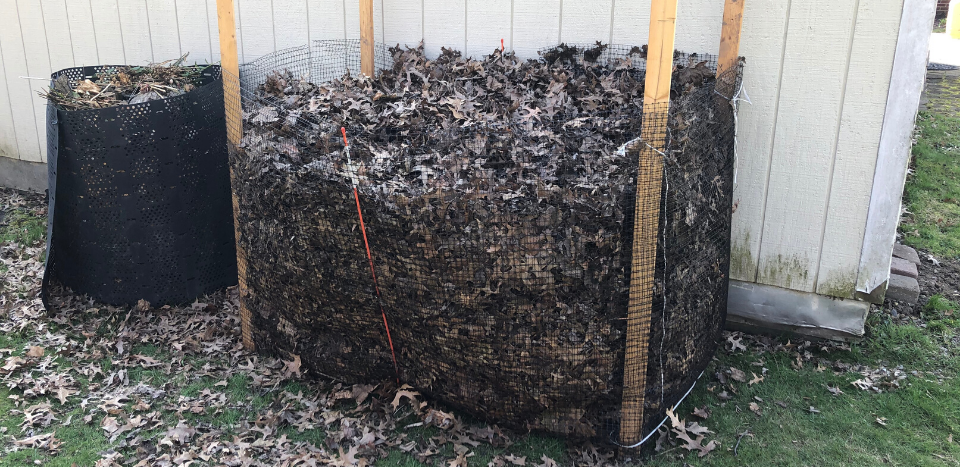How to Compost
By Elena Roszkowski
Fairview Park, like many communities, is limiting their city services during the pandemic. This means our yard waste collection is temporarily suspended. Last weekend, my husband and I looked out at our mess of a backyard and wished that we were a little more aggressive during fall clean up. Our flower beds close to the house weren’t bad, but our 600 square foot vegetable garden was a tangle of leaves, torn up mesh fencing and broken fence posts. I intended on making a few repairs to the fencing so it could be reused for the 2020 season, but it was completely ravaged by deer through the winter.
My first goal in clean up was to remove all the unusable plastic mesh fencing. I thought most of it was trashed but found that two 6 ft x 20 ft sections were salvageable. The plastic that was trashed was an embarrassing amount and reminded me that I need to reduce my use of plastic in our yard and our life.
I started raking the leaves and garden debris and realized how much was there. At that time, I was thinking, ‘I can pack it into those paper yard waste bags but then what? The city isn’t picking up yard waste. If I leave the bags outside, they will disintegrate in the rain. If I store it in the garage, I still don’t know when the city will start picking up so I could have a rotting mess in the garage.’ It didn’t take long for the idea to formulate: I can make another compost bin out of the salvaged fencing and wood in our garage.
We already have two compost bins that were purchased on Amazon. One is a simple piece of heavy-duty plastic material that holds grass clippings and other yard waste. The other is a hot compost bin for our food scraps. The lid locks so animals cannot get in. We bought this over a year ago and it has been very rewarding to see most of our food waste rot into beautiful nutrient rich dirt. This spring will be our first time using this to fill in the garden and flowerpots. I estimate we have about 12 square feet of usable compost. Also, our trash each week is much lighter and far less stinky.
Throughout the year, we top the food scraps with the yard waste from the other bin. I’ve stirred up the hot compost bin a couple times with a pitchfork. This aerates the materials to decompose faster. It is important to do your research on what goes into a composting bin. We plan on using our compost to grow vegetables, so we only put in fruit and vegetable scraps, coffee grounds, tea, washed eggshells, and cardboard egg cartons. We do not compost meat, citrus, dairy, processed foods or pet waste. This system has been working out well, but the bins do not hold all the yard waste. Hence, we still utilize the city’s collection program.
I found four pieces of wood to use as posts and hammer them into the ground. Once they were in, I used some twine to tie the fencing in place. It needed a little support, so I wove some orange driveway markers in the fencing on the wider sides. The footprint is about 2 ft x 5 ft and 3 ft high. Plenty of room to hold our yard waste. Once again, I went back to raking leaves.
The last month has felt more and more limiting as we continue to feel the effects of COVID-19. My husband and I are doing our part by staying at home as much as possible. The idea of staying at home can be a bit boring and depressing, but I encourage everyone to use this time as an opportunity to be more creative and resourceful.
I have learned a lot about my influence on the local environment through the West Creek Conservancy. Their meetings and workshops are full of information on conserving our local habitats but also how we can make an impact at home. Composting, installing rain barrels, planting native species and creating rain gardens are just a few projects that can influence our environment. A perfectly sustainable, environmentally friendly home and yard does not happen overnight. It is a journey full of education, ideas, and projects. This spring is a great time to get out and work on the next project.

